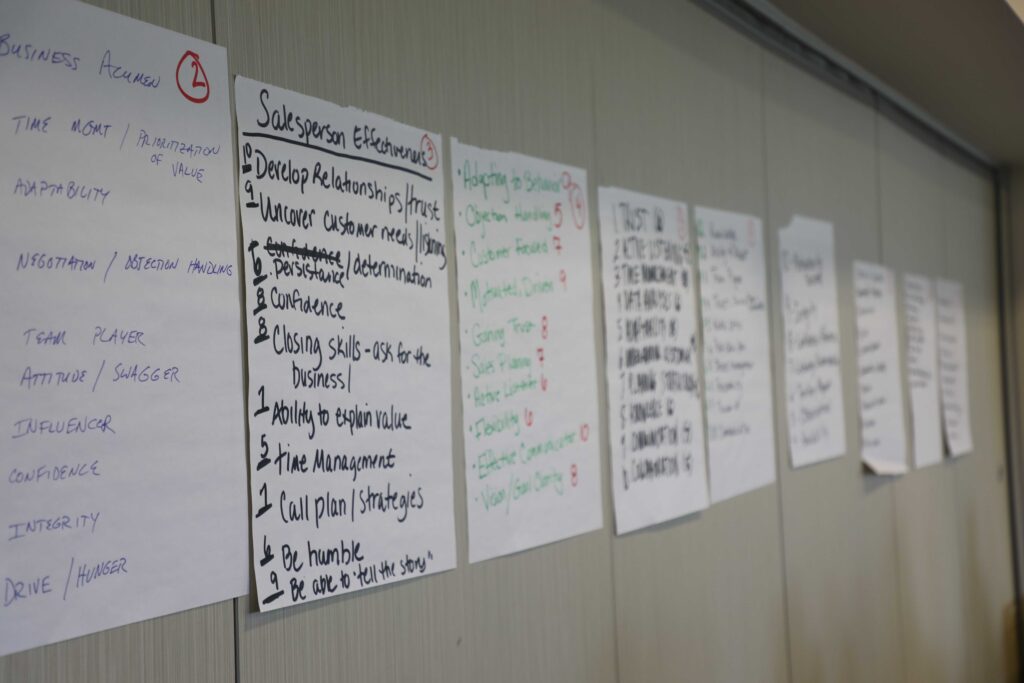Article
Sull, Donald; Stefano Turconi, Charles Sull, and James Yoder. “Turning Strategy into Results.” 59:3 MIT Sloan Management Review (Spring 2018): 9-20.
Reviewer
Dr. Michael Gunderson, Director and Professor
Summary
This paper addresses how best to turn complex strategy into plans for execution. The authors note the careful balance that must be struck between being too vague and being too specific—a very fine tightrope to walk, indeed. They suggest setting a few strategic priorities that will help align the team and drive decision making.
The authors document seven characteristics of strategic priorities:
- Limit to a handful of objectives
- Focus on the mid-term
- Pull toward the future
- Make the hard calls
- Address critical vulnerabilities
- Provide concrete guidance
- Align the top team
What this means for food and agribusiness
I naively thought the process of turning strategy into results would be straightforward and simple. I have recently stepped into the directorship of the Center for Food and Agricultural Business, so I am using this review article in a very self-serving manner. Our fiscal year at Purdue runs from July 1 to June 30. Because I took on the leadership role starting May 1, it seemed prudent to do some business planning for the upcoming year as well as some strategic planning. The process has challenged me in unexpected ways.
New managers, seasoned managers, executives, and front-line managers all would benefit from reading this article and heeding the advice. The lessons will help you move more quickly toward aligning your team at any level of the organization. Senior executives stand to benefit most obviously from the recommendations. All managers can use the framework to provide guidance to the team they lead. The lessons also are broadly compatible with other work regarding the link from strategy to execution—in particular, The Four Disciplines of Execution.
The first two recommendations might be a bigger challenge to agricultural businesses that operate on the crop cycle of once per year. It would be easy to focus in on the very short term with dozens of very specific goals by product, service, and/or customer. The article suggests that business planning and strategic planning are different. The authors also note the drawback to redoing the three-to-five-year goals every year is that employees fail to see the staying power strategic goals. Focusing on a single crop cycle is too constricting. It fails to recognize that growth, particularly among new customers, often takes substantial time. Thus, a mid-term goal for growth in sales provides the flexibility to an employee to earn that growth over time.
The third characteristic, pulling toward the future, is more important than ever in the current food and agricultural business environment. This characteristic aligns closely with the fifth characteristic, address critical vulnerabilities. As a supply chain, food and agricultural businesses have earned a reputation of being slow to adapt to change. Companies with well-established food brands are seeing market share erode more quickly than ever. These brands are losing to upstart companies that jumped on the fresh, less processed demand of consumers (millennials in particular). There are pressures on retailers of food and agricultural inputs to respond to disruptors such as Amazon and FBN. Setting those mid-term goals has to allow enough room for innovation as well.
The fourth characteristic, making the hard calls, has been one I have struggled with most in the center. We have so many activities that are interesting and innovative. Sometimes they also distract us from the biggest priorities and dilute our most valuable efforts. We have worked as a leadership team to refocus on our core. We are saying “not right now” to more projects than we had recently.
The sixth characteristic seems at the very heart of the balance that leaders must strike between vague, complex strategy statements and micromanagement. How does one provide enough concrete guidance without restricting creativity in achieving the strategy? The authors note that metrics matter. In working with companies implementing The Four Disciplines of Execution, I have found this process to be deceptively simple. One needs to set lead measures that, when achieved, are likely to result in the mid-term goals being set. Often, I have discovered that firms have excellent lag measures, such as market share, revenue generated, margin generated, customer satisfaction, and others. Leaders often struggle with defining the lead measures that are strong predictors of those outcomes. This is often because firms have measured the lead types of activities. As a simple example, the number of sales calls should largely be a strong predictor of additional sales.
The final characteristic, aligning the team, is critical. When leadership is not aligned, it is impossible for the entire organization to be aligned. To measure alignment, the authors asked leaders of 124 companies to write the key priorities. Then they measured the overlap in the responses among teams. Just six of the companies had greater than 80 percent overlap in the strategic priorities. It takes time to align the team. It starts with input from all leaders and working together to establish the key priorities. It also takes some repetition to keep those priorities top of mind.
Have you had some success turning strategy into results? Perhaps you would like to share the challenges you have encountered. Email your thoughts, comments, and questions our way.



